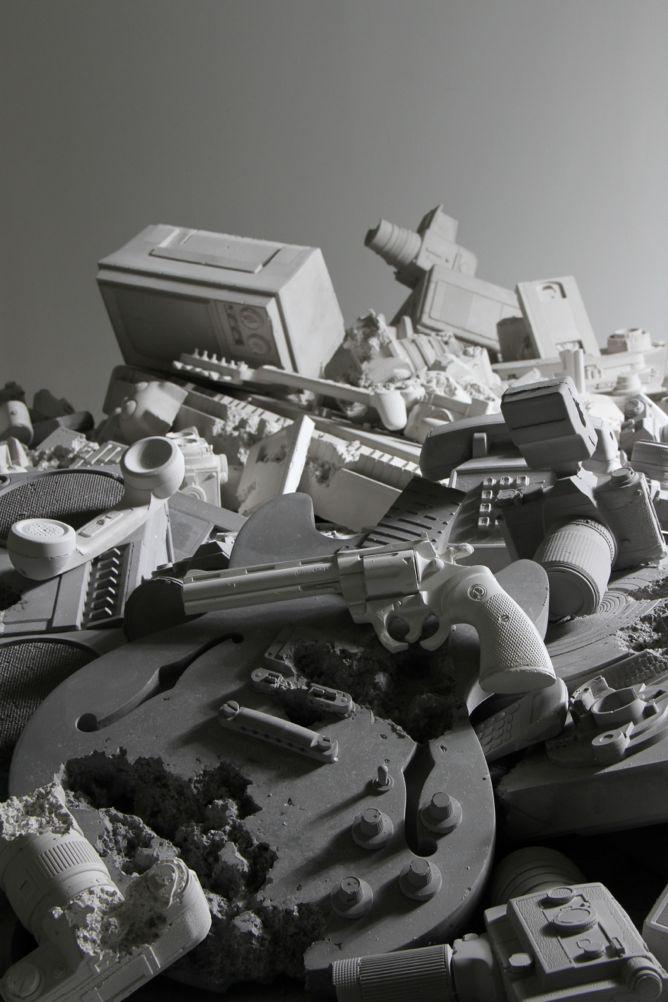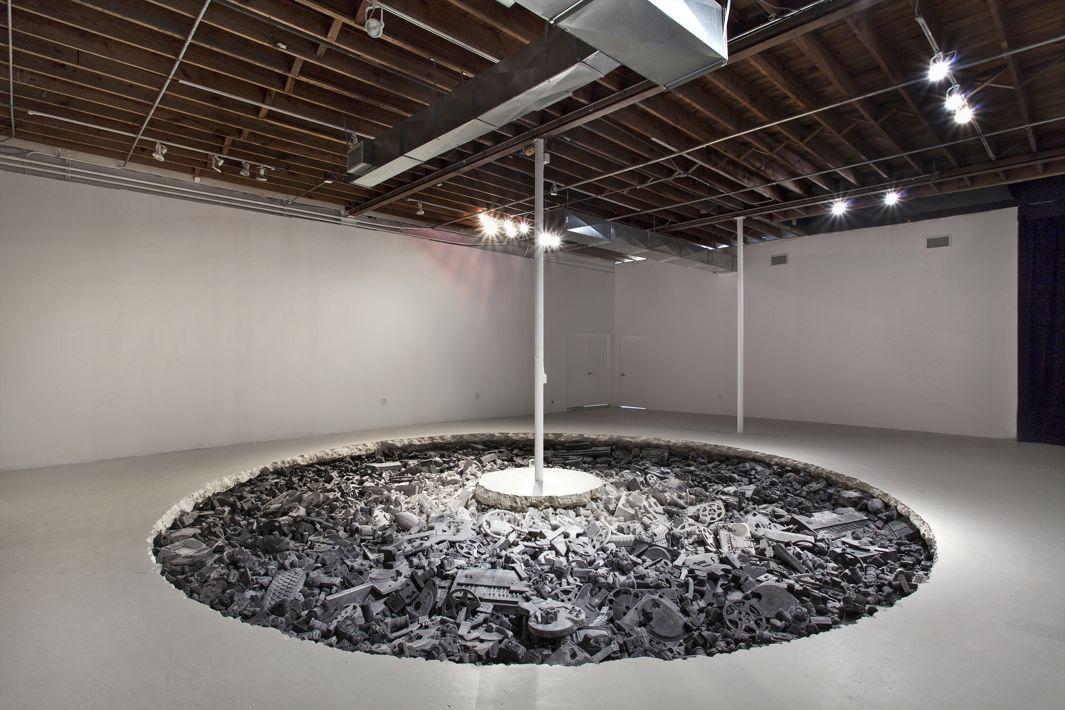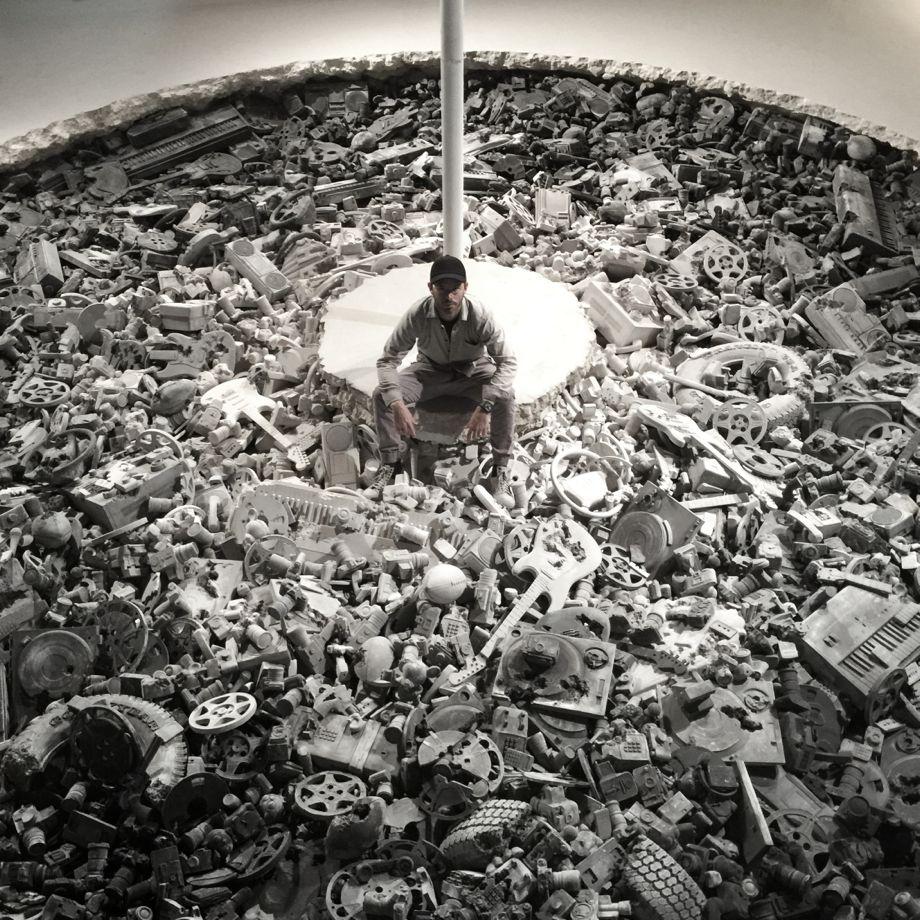Last weekend, just ahead of Art Basel Miami Beach, visitors to the Locust Projects exhibition space got a glimpse of Welcome to the Future, artist Daniel Arsham’s ode to an archaeological dig full of reproductions of 20th-century media devices that clog our 21st-century landfills.
Arsham—who has a background in set design for Merce Cunningham and runs the Brooklyn-based architecture firm Snarkitecture—spent a year collecting some 3,000 boomboxes, electric guitars, SLR cameras, Nintendo controllers, push-button telephones, VHS tapes, Walkmans, film projectors, portable televisions, and other iconic objects that have lost their urgent utility to new technologies.

Courtesy of Locust Projects/Zack Balber with Ginger Photography

Courtesy of Daniel Arsham
But if the installation is a comment on planned obsolescence and the wreckage on landfills, it’s also a monument to the detritus produced by art exhibitions: Those objects, some of which were broken as well as outdated, were destroyed in the process of making the molds for the reproductions. Arsham experimented with casting techniques using ash, steel, obsidian, glacial rock dust, or rose quartz crystal to achieve a partially deconstructed effect that would nevertheless hold without crumbling. Then he dug a trench in the exhibition space’s concrete floor—25 feet in diameter and 3 feet deep—and set the objects amid the concrete chunks (some weighing up to 600 pounds).
“The trench presents the recent past as archeology,” says a press release about the installation, “a world of technological objects whose obsolescence was built into their design, preserved like petrified wood or the figures of Pompeii. Rather than regard these objects as individual sculptures, the artist presents them as a mass below our feet, producing a new narrative of production, history, and discovery.”

Courtesy of Locust Projects/Zack Balber with Ginger Photography
Ashram told the Miami Herald that he chose the materials in order to create a gradient from the darker outer edges of the installation to its pale center, with the darkest objects cast from volcanic ash, followed by ash and steel, obsidian, glacial rock, and finally crystal. He began experimenting with casting objects when he recreated Pharrell Williams’ first keyboard in volcanic ash.

Courtesy of Locust Projects/Zack Balber with Ginger Photography
“I went to art school, and you don’t learn how to cast ash in art school,” Ashram said. “I want [the sculptures] to appear that they are falling apart, but I don’t want them to fall apart. I want to keep them in a frozen stasis.”
Welcome to the Future is on through January.
